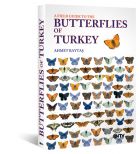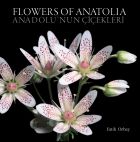Buy or gift a stand-alone digital subscription and get unlimited access to dozens of back issues for just £18.99 / $18.99 a year.
Please register at www.exacteditions.com/digital/cornucopia with your subscriber account number or contact subscriptions@cornucopia.net
Buy a digital subscription Go to the Digital EditionThe intoxicating scent of attar of roses, the oil distilled from the petals of damask roses, has worked its magic on men and women for centuries. Martyn Rix traces the history of the damask rose from its roots in Neolithic times and travels to Isparta in southwest Anatolia to see how these precious petals yield up a liquid worth its weight in gold. Photographs by Berrin Torolsan and Martyn Rix
So popular did roses become in Roman times that Horace worried the craze would cause farmers to neglect their olive groves. The Romans were prolific producers and consumers of roses. They used the petals in cooking, in flavouring wine, puddings and sherberts, as well as at family festivals; rose-scented oils were used instead of soap. Two thousand years earlier, the Egyptians had been enthralled by the rose. Two thousand years later, we are equally under its spell. Attar of roses is literally worth its weight in gold.
A few years ago I was preparing a television programme on roses with Roger Phillips. We planned to trace the ancient history of roses and, if possible, to find the white-flowered climber Rosa phoenicia, a rather mysterious plant not cultivated in England, which has always been assumed to be a parent of the summer damasks. I remembered an inspiring article by Berrin Torolsan, in an early issue of Cornucopia, which described the damask roses of Burdur and Isparta and the manufacture of attar of roses – of which Turkey is the world’s largest producer – and gave delicious-sounding recipes using rose petals. In late March the director and I flew to Antalya and drove north towards Isparta to recce the site. Though spring in Antalya, it was still winter in Anatolia, the hills bare, brown and dry, snow covering the mountains. Only among the ruins of Sagalossus, a short diversion from the main road, did we find the earliest spring flowers – small cyclamen, crocuses and dwarf colchicums – growing between the seats of the theatre. The mountains around Isparta are mostly treeless, with powdery volcanic soil. On the lower slopes, the terraced fields are planted with roses, like low thorn hedges, following the contours. Poplars and fruit trees are concentrated on the lower, richer ground.
We talked to the caretaker of one of the distilleries, empty and silent except during the rose harvest, and arranged to come again when roses would be flowering. After inquiries in Isparta, we decided to return in early June with a whole crew.
By then the countryside was transformed, the cornfields with sheets of purple larkspur, clumps of vetch and an exciting Venus’s looking-glass (Legousia pentagonia). Young leaves covered poplars in the valley, and rose hedges were a soft green, with masses of pale pink buds. The roses grown around Isparta and Burdur are summer damasks, the variety called trigintipetala or ‘Kazanlik’. Kazanlik is a town in central Bulgaria, which was the centre of production of attar of roses from the seventeenth century. Roses were taken there by Ottoman merchants, and cuttings were brought back to Anatolia during the movements of population following the war between Russia and Turkey in 1878. They were planted in various places, such as the Göksu valley on the Bosphorus, but thrived best in the deep, sandy soils around Isparta and Burdur, and it is here that Turkish rose production is now concentrated.
A new book on Vassilaki Kargopoulo: Photographer to His Majesty the Sultan. By Philip Mansel
Dedicated to Venus by the Romans, no other fruit has so many symbolic and material associations with sensual beauty. Lovely soft pink flowers are followed by crimson velvetly fruit, soft and round, with a heavenly taste and aroma.
More cookery features
William Morris and Mariano Fortuny familiarlised the West with the sumptuous floral designs of Ottoman textiles. But few are aware of the the bolder side of Turkish design
Few travellers to Turkey enjoying the hedonistic delights of Mediterranean cruising venture east of Antalya, capital of Anatolia’s Turquoise Coast – intimidated perhaps by rumours of a wild hinterland that even Alexander the Great found hard to tame. But those who dare to leave the crowds behind will discover an awe-inspiring landscape of cliffs that drop sheer to the sea, epic castles and remote Byzantine retreats. Kate Clow and Jacqueline de Gier joined ten other guests and a lecturer for a twelve-day voyage of enlightenment aboard a traditional gulet
Geoffrey Lewis, acknowledged as the dean of Turkish studies in Britain and beyond, learned the language while serving in the RAF in Egypt. When he finally visited Turkey, he was smitten for good. By Andrew Mango. Portrait by Charles Hopkinson
For more than thirty years Terence Mitford and George Bean painstakingly identified and recorded the forgotten ancient sites of Turkey’s Aegean and southern shores. Their contribution to the preservation of the country’s archaeological heritage is incalculable, their guidebooks are legendary, yet the men themselves are unsung. Barnaby Rogerson, in this homage to his heroes, uncovers an extraordinary pair: a gentle giant and a man of steel
The dusty rooms of a crumbling Istanbul palazzo are a living museum of the plaster-caster’s art. Berrin Torolsan visits the heir to a fine tradition. Photographs by Fritz von der Schuelnburg



Cornucopia works in partnership with the digital publishing platform Exact Editions to offer individual and institutional subscribers unlimited access to a searchable archive of fascinating back issues and every newly published issue. The digital edition of Cornucopia is available cross-platform on web, iOS and Android and offers a comprehensive search function, allowing the title’s cultural content to be delved into at the touch of a button.
Digital Subscription: £18.99 / $18.99 (1 year)
Subscribe now